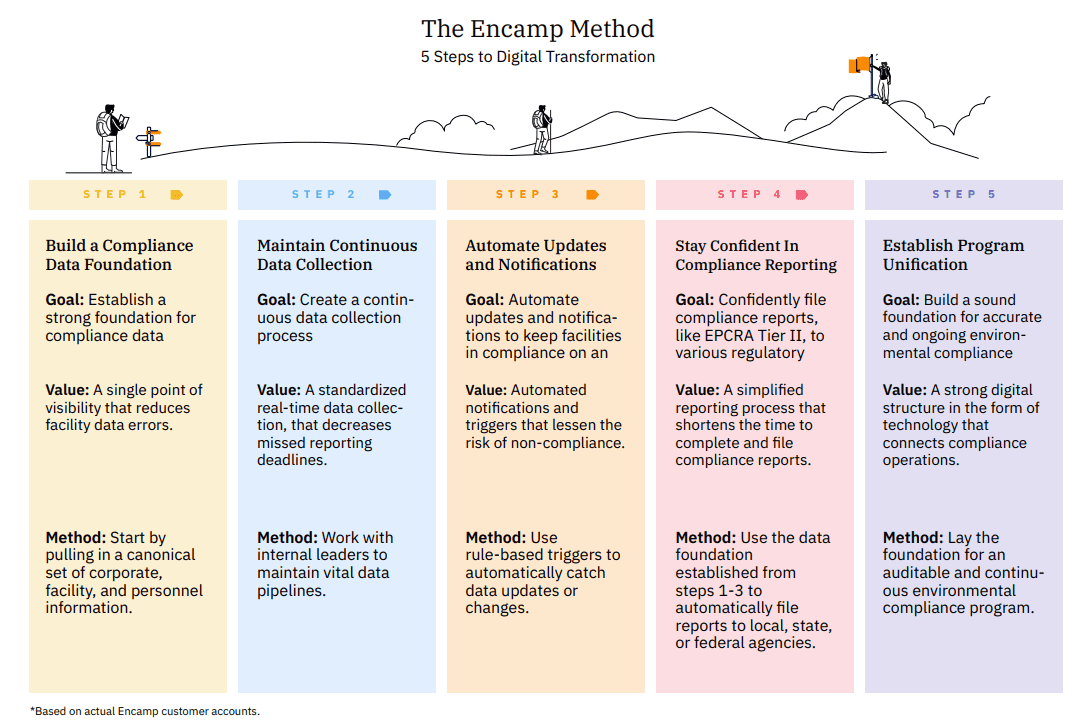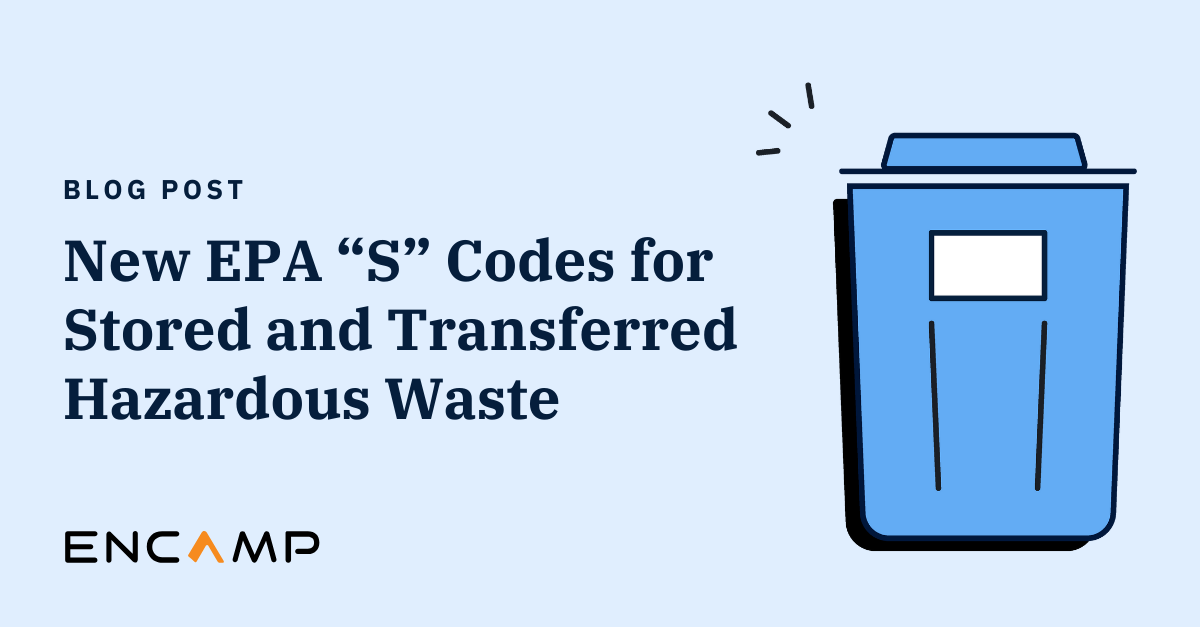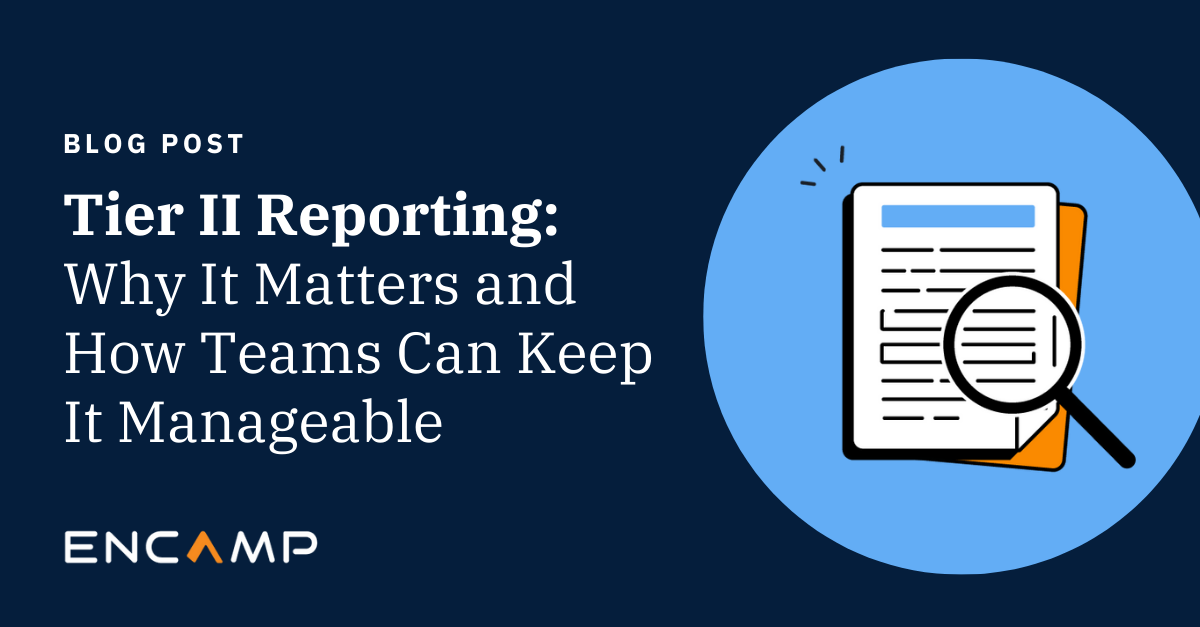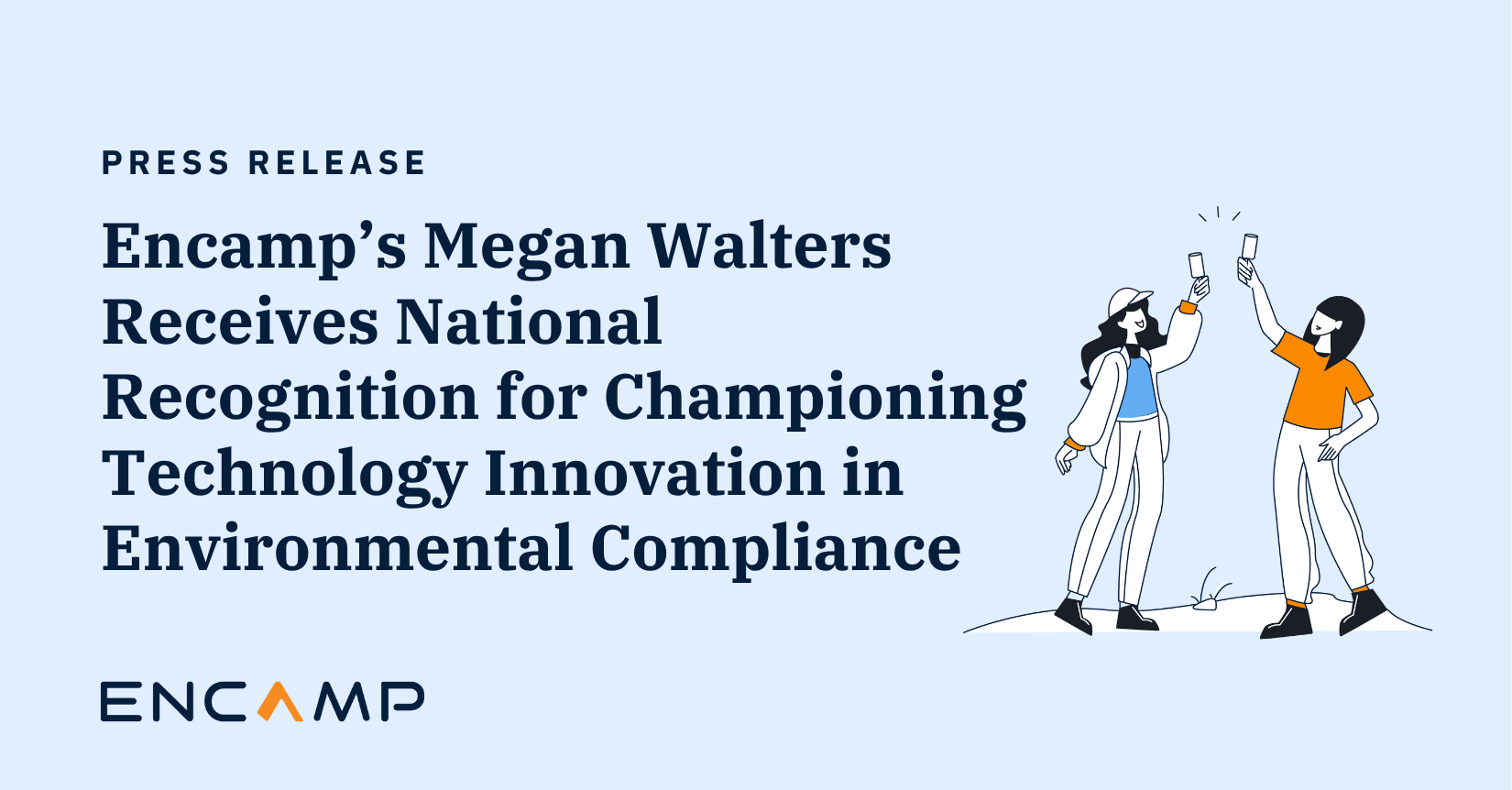“How would a digital strategy impact our company’s EHS process and compliance outcomes?” It’s a good, thought-provoking question, and a lot of EHS leaders are asking it right now when considering a digital game plan of their own. Which I’m glad they are. For one thing, it echoes my own belief that companies must pick up the digital pace for their EHS and compliance operations. But more than that, consistently positive compliance and business outcomes are how Encamp views the merits of EHS digital transformation — or in our case, the environmental aspect of EHS and what we call environmental digital transformation.

Thankfully the interest in environmental digital transformation is spreading. With digital transformation in general being recognized as a strategy since 2015, many businesses have discovered its value and extended digital technologies and practices to their environmental compliance efforts. Many others, however, are just starting on the digital journey for EHS.
Luke Jacobs, Encamp CEO & Co-founder
Investing in Tomorrow, Today
Answering the question for digitalization in EHS
It’s encouraging that more EHS leaders are asking how a digital strategy can impact compliance processes and outcomes. But the more pressing question is typically, “How do we start?,” which doesn’t always have a clear-cut answer.
One article on EHS digital strategies puts an answer in motion. The article’s author is Rebecca Dabbs, a Climate Change and Sustainability Services partner at consulting firm Ernst & Young (EY), and she makes some excellent points about digital technologies in EHS.
“It is not the role of EHS professionals to know it all,” Dabbs says in her article’s final assessment. “Instead, those seeking to leverage digital technology to improve EHS should understand their needs and strategically engage support as required. This includes seeking out trusted advisors who understand the elements required for success. Accessing the right support to achieve successful initiatives, and to build an integrated digital architecture, is critical.”
Some EHS leaders might call it an environmental digital transformation epiphany. A call to action, perhaps. But let’s also be realistic about the transformational scope required to achieve better EHS process outcomes for environmental compliance.
Because as Dabbs also points out in her article, “There are no simple solutions; one size does not fit all and one shiny, new gadget is not going to lead to long-term improvement.”
The simple math of compliance
Before founding Encamp, I worked in the environmental consulting world and was constantly buried in compliance reporting. And like most anyone who’s ever filed a Tier II report, I always thought the process was basically a mess of endless tasks and data… with no rhyme or reason to any of it. Ironically, though — and what truly reveals compliance reporting as being harder than it needs to be — is that the framework of compliance itself is really quite simple. I call this, accordingly, the “simple math of compliance.”
Compliance is a function of facilities across discrete jurisdictions
that define requirements applicable to operations that have
environmental impact.
Now think of how digital technologies fit into this equation. With no universal playbook on how to implement and optimize such technologies for compliance functions, knowing where to start on the transformation path isn’t easy.
Obviously, it helps if an organization already has an existing digital foundation for other business functions. But even then, integrating digital technologies for EHS and compliance operations in particular can be a puzzle with no discernible starting point.
Guided Environmental Compliance
So here’s the next question for EHS leaders:
“What can our environmental operations do to successfully plan and adopt environmental digital transformation across our organization?”
Encamp has been fortunate enough to work with well-recognized businesses in industries of all kinds, and based on the steps many of them have taken in their own digital journey, we’ve formulated a method we call Guided Environmental Compliance.
The 5 steps to environmental digital transformation

You can read all about the method in our interactive eBook Guided Environmental Compliance, but the gist of its five core steps are in the following chart.
And don’t think of these steps in terms of starting from scratch. Think of them as unlocking more of the digital energy your organization likely already has in place.

A digital path to compliance simplification
The principle of Guided Environmental Compliance is that environmental digital transformation brings a simplified method to the complexities of compliance and reporting. As your organization integrates digital technology into its compliance program areas, it empowers EHS and operations teams to centralize information, make data more visible, construct a continuous and auditable data collection process, and ultimately gain central control over your entire compliance program.
Several businesses that incorporate Encamp’s technology into their digital strategy, in fact, have extended our method’s framework to compliance stakeholders throughout their organization, including at the executive level.
In effect, the digital simplification path runs from gathering and validating data to submitting final reports, and taking our method’s transformational steps makes the most immediate impact toward realizing continual compliance and strategic sustainable value.
It’s also how organizations effectively join Encamp’s mission to, as we say, create a world where good for business can equal good for the environment.
Where and how to start
From my own experience, gaining a better understanding of your organization’s environmental compliance requirements and goals is a top prerequisite for any environmental digital transformation.
As part of their digital strategy assessment, EHS leaders should consider all the places technology would fit within their compliance management requirements to make goals more achievable, especially from an end-user’s perspective. For instance, how might solutions like digitalized processes for data collection make data management and reporting functions more efficient for an EHS team? (Answer: No more time-robbing manual work and human error. Processes become easier to automate, standardize, and repeat from one reporting year to the next. Subsequently, process consistency improves the quality and accuracy of your data, along with your trust in it.)
Compliance goals naturally vary from one organization to another for its EHS and compliance operations. But to reiterate the five steps in Encamp’s Guided Environmental Compliance method, most organizations we work with cite the need to establish compliance foundations and a continuous data collection process. Automating the compliance reporting process, including receiving regulatory updates and notifications, is also a primary aim.
Ultimately, when you’re weighing long-term strategic EHS and sustainability value for your organization, a final step — and key goal — is to unify compliance processes across all of your organization’s applicable program areas for continual compliance.
High-tech solutions and high-touch support
After determining your requirements and goals for environmental digital transformation, a strategy requires formulating a course of action, both with your organization’s IT team and a valued digital technology partner. Of specific note here, the more this digital technology partner can guide you, the better the plan.
Understandably, the adoption of digitalization in EHS is often met with fear of the unknown, which is often the case for any digital transformation effort. As you strategize and assemble your foundation for environmental digital transformation, having the right experts dedicated to overcoming current and future challenges is absolutely vital. Long-term, a knowledgeable digital technology partner can help prepare your organization to see ahead and successfully manage change.
Fundamentally, Guided Environmental Compliance blends this kind of high-touch expert support and high-tech solutions to transform compliance programs and human processes into a technology-driven system. The system is intrinsic to your organization’s own environmental operations, cementing the digital foundation you create to achieve accurate and ongoing environmental compliance.
Also because organizations grow and add or acquire more facilities, this foundation scales appropriately when needed.
This is why our guided method applies a data-driven paradigm to transform environmental compliance on an ongoing basis, a first principles approach that inspired the founding of Encamp in 2017, and that continues to influence us now.
A relational database and operating system
At its core, our method builds the relational database and operating system for your environmentally relevant operating data. Or in simple-math-of-compliance terms, you get a unified data system to manage the endless mess of tasks and data with a clear path and understanding.
Compliance support from EHS industry veterans
Providing a great customer experience and helping customers achieve their goals is one of Encamp’s benchmarks and has been since we started. Central to the Guided Environmental Compliance method are our own environmental compliance experts, who can help a business’s environmental operations untangle a web of data, standardize processes, and preserve institutional knowledge. They also help align all of this into a compliance program that works across multiple facilities, states, and operational systems.
I’m proud to say the compliance experts at Encamp are EHS industry veterans who were previously environmental supervisors, managers, scientists, engineers, state regulators, and consultants. As they like to say, “We’ve been there,” and they mean it.
Our Vision Beyond Environmental Digital Transformation
I’ll reiterate Encamp’s mission here because I truly believe in it: We’re out to create a world where good for business can equal good for the environment. By making environmental compliance faster, simpler, and more accurate, we align incentives between regulated industry and regulators, and especially the public. Going forward, this will continue to make for a healthier and safer environment.
For businesses, It will reduce compliance costs and risk. And for regulators, it will give them the data that’s most critical to effectively achieving public policy goals to protect the world in which we live.
Finally, in building the unified data system for environmental information, we’ll continue to help companies unlock strategic sustainability and drive continual compliance. As they do, they’ll continue to align business outcomes with social responsibility, and become better stewards of the environment.
Chat again soon,
Luke
Luke Jacobs
Jacobs founded Encamp Inc. in 2018 with his two co-founders, his brother Sam Jacobs and friend Dan Smedema from what started as an idea during a camping trip in June 2017. Encamp focuses on software to serve the EHS industry by streamlining environmental compliance reporting.






